Abstract
The purpose of this study was to determine the association of violent trauma with nonemployment status of victims and whether victims who knew their assailants were associated with a higher nonemployment rate than victims who did not know their assailants. Data were collected for 585 patients between 18 and 65 years of age. Patients were residents of Washington, DC, who presented with violent injuries to the emergency department at DC General Hospital between November 1989 and November 1990. Study participants were divided into two groups: those who knew their assailants (Group 1, n = 329) and those who did not know their assailants (Group 2, n = 256). The overall nonemployment rate for the sample population was 51% versus 29% for residents in the hospital catchment area (comparison population based on census data) (P < .001). Of patients in Group 1, 61% were nonemployed compared with 38% in Group 2 (P < .0001). Of male patients in Group 1, 55% were nonemployed compared with 33% in Group 2 (P < .0001). Of female patients in Group 1, 71% were nonemployed compared with 69% in Group 2 (P < .80). Results indicate that there is a significant association between victimization from violent trauma and nonemployment of the victim. In addition, male victims familiar with their assailants had a higher nonemployment rate than victims who did not know their assailants. We conclude that nonemployment seems to contribute to the violence in this population.
Full text
PDF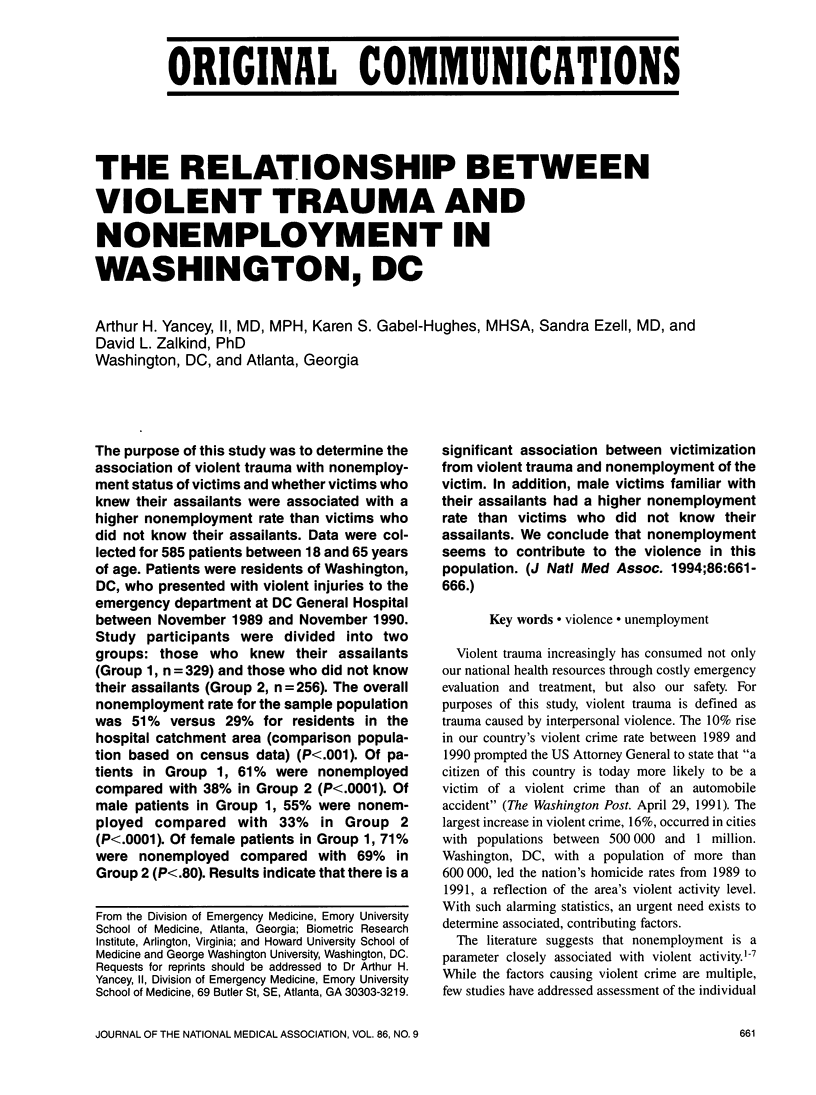
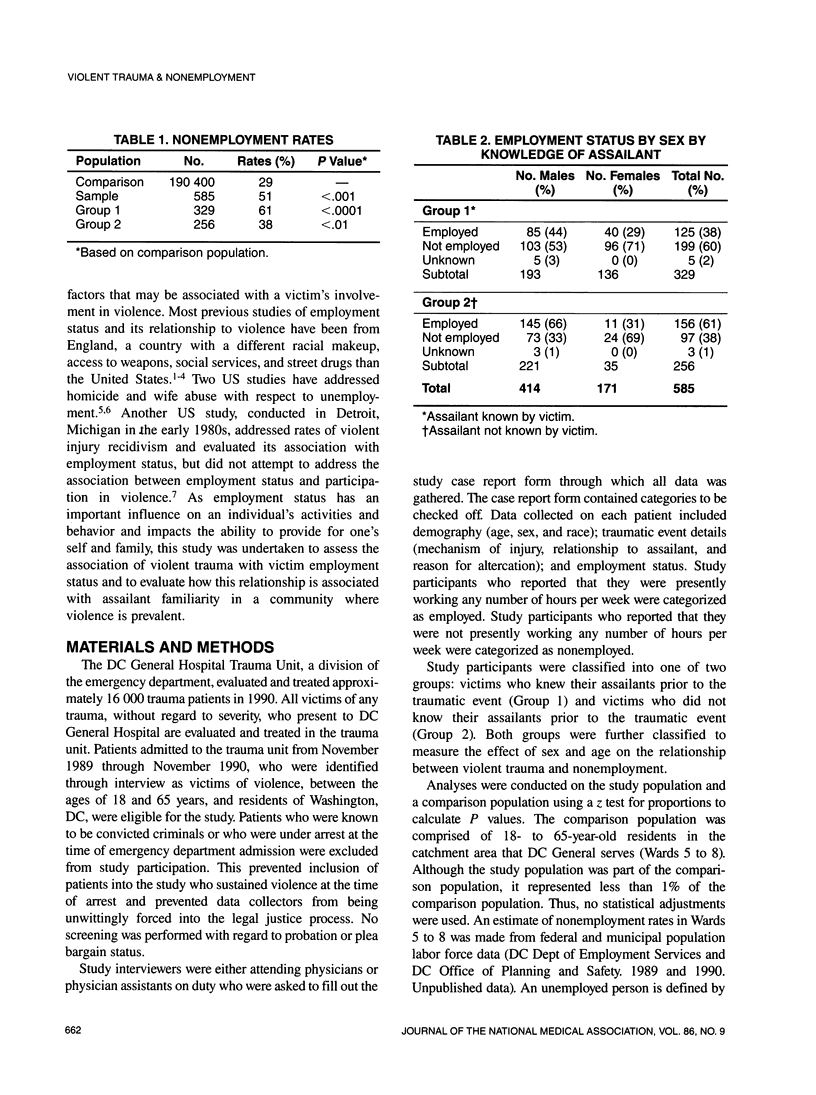
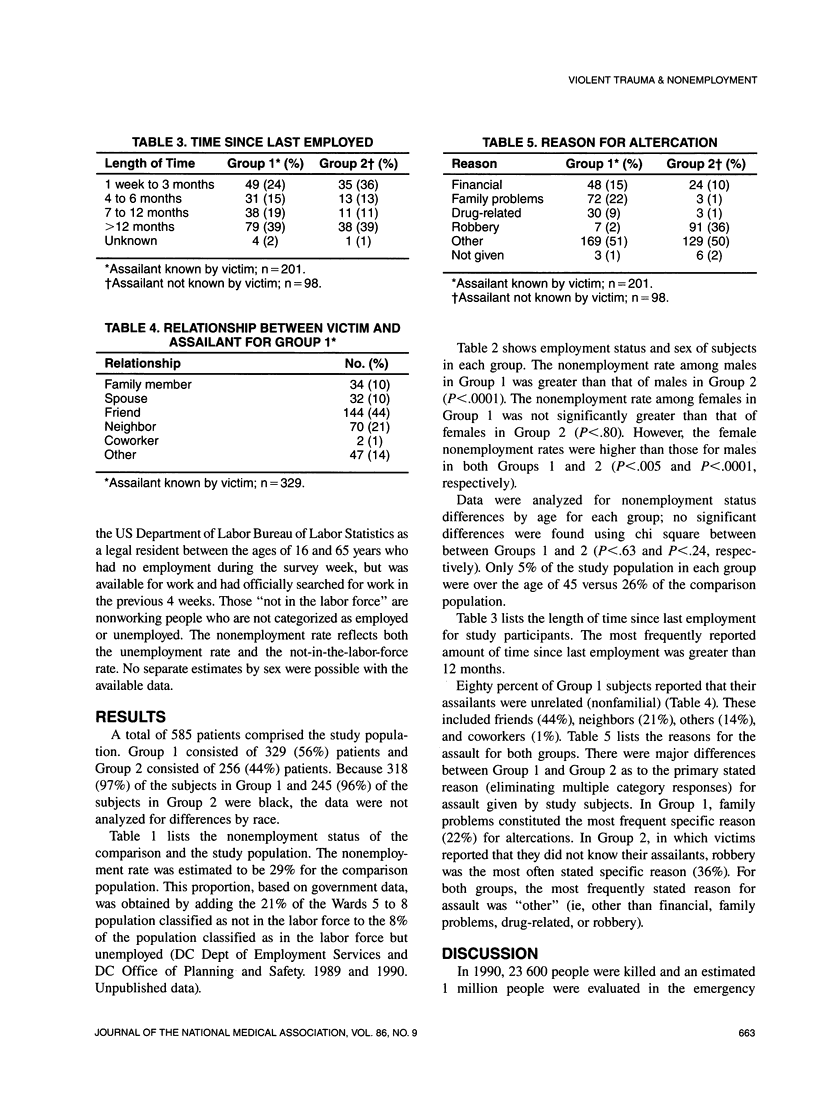
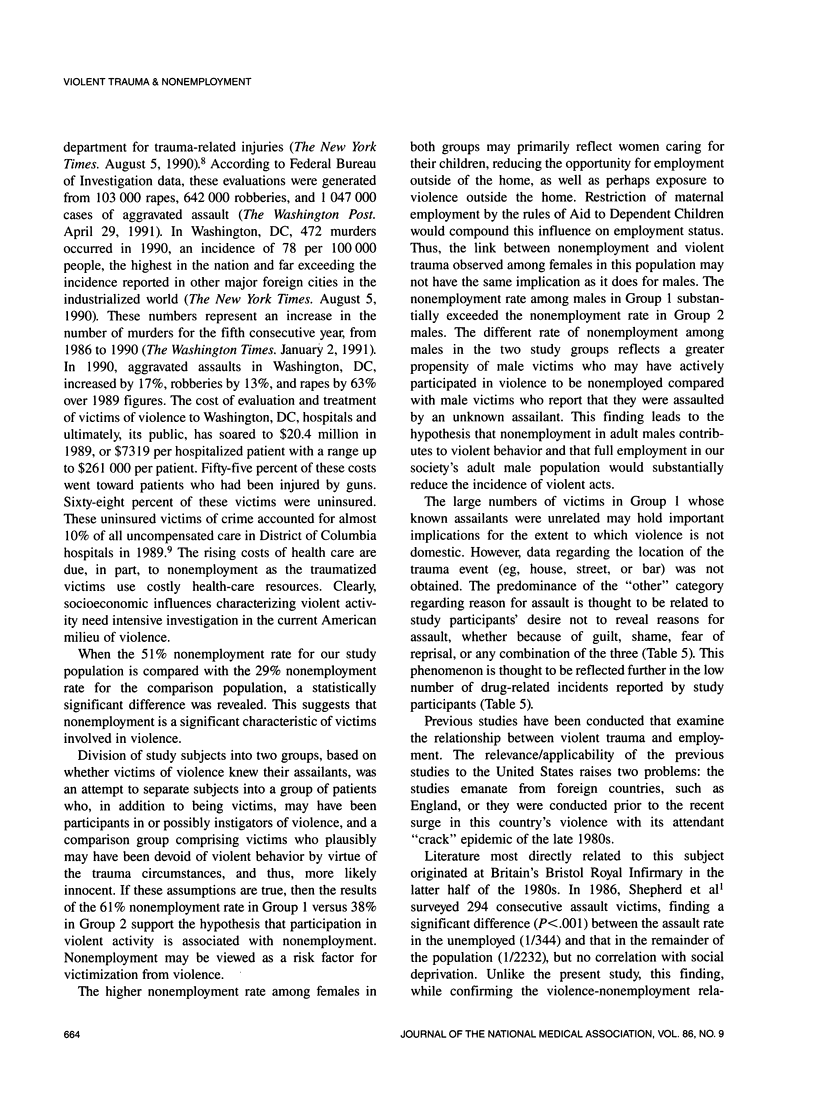
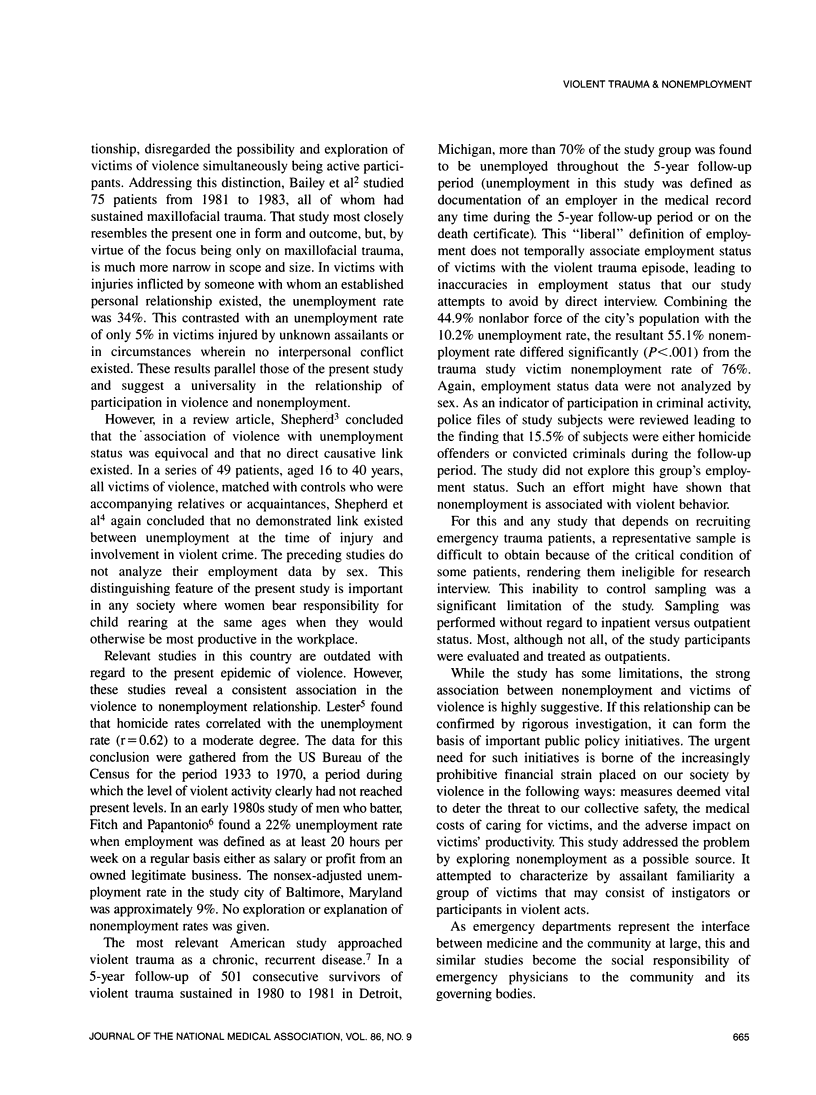
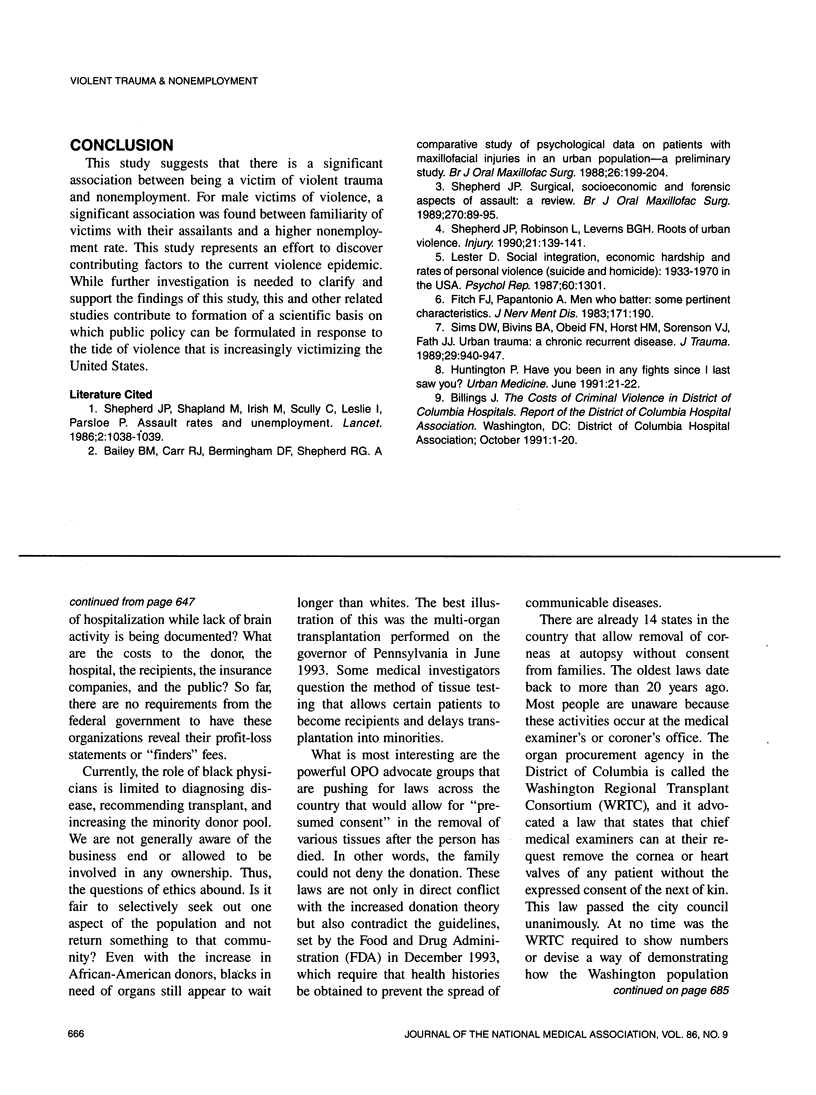
Selected References
These references are in PubMed. This may not be the complete list of references from this article.
- Bailey B. M., Carr R. J., Bermingham D. F., Shepherd R. G. A comparative study of psychosocial data on patients with maxillofacial injuries in an urban population--a preliminary study. Br J Oral Maxillofac Surg. 1988 Jun;26(3):199–204. doi: 10.1016/0266-4356(88)90163-5. [DOI] [PubMed] [Google Scholar]
- Fitch F. J., Papantonio A. Men who batter: some pertinent characteristics. J Nerv Ment Dis. 1983 Mar;171(3):190–192. doi: 10.1097/00005053-198303000-00011. [DOI] [PubMed] [Google Scholar]
- Shepherd J. P., Robinson L., Levers B. G. Roots of urban violence. Injury. 1990 May;21(3):139–141. doi: 10.1016/0020-1383(90)90081-5. [DOI] [PubMed] [Google Scholar]
- Shepherd J. P., Shapland M., Irish M., Scully C., Leslie I., Parsloe P. Assault rates and unemployment. Lancet. 1986 Nov 1;2(8514):1038–1039. doi: 10.1016/s0140-6736(86)92646-2. [DOI] [PubMed] [Google Scholar]
- Sims D. W., Bivins B. A., Obeid F. N., Horst H. M., Sorensen V. J., Fath J. J. Urban trauma: a chronic recurrent disease. J Trauma. 1989 Jul;29(7):940–947. [PubMed] [Google Scholar]


